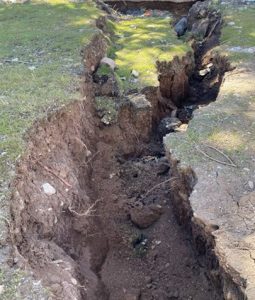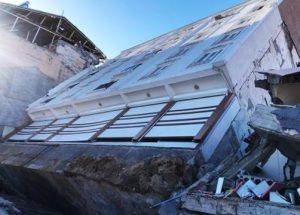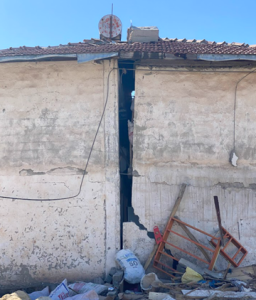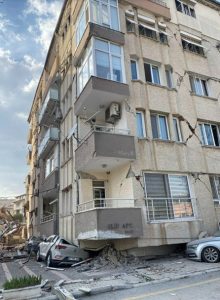by T. Deniz Uludag, PhD, M.ASCE
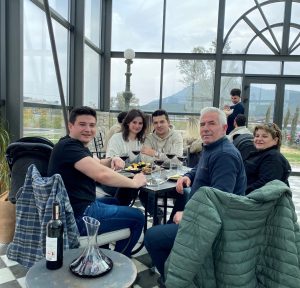
On February 6th, 2023, a Mw 7.8 earthquake hit southern Türkiye at 4:17 am (local time), followed by a second large Mw 7.5 earthquake in the same region about 9 hours later. This tragic scenario was compounded by thousands of aftershocks, regional soft soil, structures designed by old code provisions, and construction flaws, resulting in a catastrophic event and numerous fatalities. A reminder to those of us in the structural engineering and design profession that strong pre-shocks and aftershocks, (including those of similar magnitude), can occur before and after the mainshock. The cumulative effects of an earthquake event should be characterized and considered in the design codes of buildings and other infrastructure systems.
The 10 cities affected most by these sequential earthquakes are Kahramanmaras, Adiyaman, Hatay, Osmaniye, Gaziantep, Malatya, Adana, Diyarbakir, Elazig, and Kilis, encompassing over 15 million residents, (approximately 17% of Türkiye’s population). According to official records, the number of fatalities reached nearly 50,000, with more than 100,000 people injured. A total of 19,284 buildings collapsed, and 373,038 buildings were reported as “damaged” at varying levels (Ministry of Environment, Urbanization and Climate Change, 2023). Damaged structures included residential buildings, industrial structures, bridges, transportation systems, earth structures, and harbors, affecting multiple regional “lifelines.” Direct infrastructure loss exceeded $34 billion according to initial estimates (World Bank, 2023).
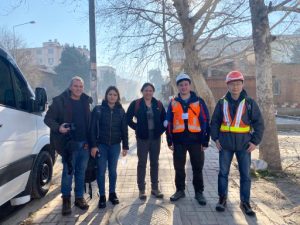
Jui-Liang Lin, National Center for Research on Earthquake Engineering
I grew up in Türkiye and still have family and friends there. I heard about the earthquakes first over social media. As more information came in my heart continued to sink because I knew this catastrophic event was going to cause numerous fatalities. The first thing I did was try to contact those that I know that are still there, to make sure they were all ok. It was early evening in Colorado but very early in the morning in Türkiye, which made contact difficult to establish. After discovering that all those I know and love were unharmed, my next goal was to find and join an advance team from the United States traveling to Türkiye to perform investigations of the damaged infrastructure; I wanted to help. As I firmed up plans over the next week, Martin/Martin and its employees poured out their support. They held my hand and covered my back. It is difficult to express how much that support meant to me during that time.
I traveled to the earthquake-affected area with a research group from the United States; our intent was to investigate and document, with a goal of building a better future.
Our research team reached our base in Adana, Southern Türkiye, on February 19th, two weeks after the devastating quakes. The timing allowed our structural team to commence work right after the search and rescue operations were concluded, focusing on structural assessment before the majority of damaged or failed structures were demolished and removed. Conducting thorough investigations, with the objective of collecting and documenting time-sensitive data related to structural damage and geotechnical impacts, our team visited several affected cities including Iskenderun, Antakya, Osmaniye, Kahramanmaras, Gaziantep, Nurdagi, Golbasi, and Antakya. The following is a link to a Google map (with photos) of the buildings we investigated. Examples of observed damage and their assumed sources are shown in the shared images. Detailed reports of the inspection will be presented later, along with laboratory tests and numerical analyses. (Link to Preliminary Reconnaissance Report).
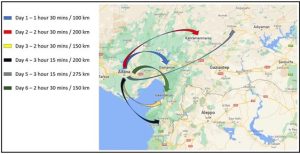
Many regions of Türkiye are vulnerable to high seismic risk; implying that a strong or devastating earthquake may occur frequently, or inevitably. Türkiye leadership, at the behest of its people, has the obligation to take serious steps regarding its seismic regulations and codes, perhaps abandoning some theoretical practices choosing to instead enforce successfully proven procedures. Chile as an example, is a country like Türkiye, both in terms of culture and economy.
Chile has an average of more than 1,000 4 Mw or greater earthquakes per year, several reaching significant magnitudes on the Richter scale. Tested in Chile and successfully proven in practice, designing 3% shear wall of a building’s length in each direction exhibits good seismic performance.
According to the Director of an elementary school in Iskenderun, Türkiye, most schools in the Iskenderun/Hatay region have been seismically retrofitted during the previous seven years; resulting in limited to no damage at those schools. The schools that were not retrofitted suffered severe damage after the recent earthquakes. It is evident that retrofitting existing buildings in the region mitigates earthquake damage. Furthermore, it is important to educate and raise awareness of the local populous living in the earthquake zone. Limited training, such as FEMA’s Rapid Visual Screening of Buildings for Potential Seismic Hazards (FEMA P-154) could inform the public at a level that they could evaluate their own buildings. Retrofitting a building is not often an inexpensive endeavor, but as it compares to loss of life due to building collapse, it is worth the expense.

Personally, this was one of the hardest projects that I experienced in my life. Walking around collapsed or damaged buildings, facing people emotionally broken, and hearing tragic stories from the affected communities. I was in constant conflict between staying focused on the task and being overcome with emotion. On my last day in the region, I was approached by a young man while our team was inspecting a pedestrian bridge. His Turkish was broken, but he said four words to me that I understood clearly, “abi, sen, ben, top”. Translated into English he said “brother, you, me, ball;” he wanted us to join him playing soccer. I do enjoy the game and convinced my team member Robert to join too. It was a positive way to spend my last day in the affected area. It reminded me that even in tragedy, hope and joy can be found, and will continue to grow as the region recovers.
Link to Preliminary Reconnaissance Report.

